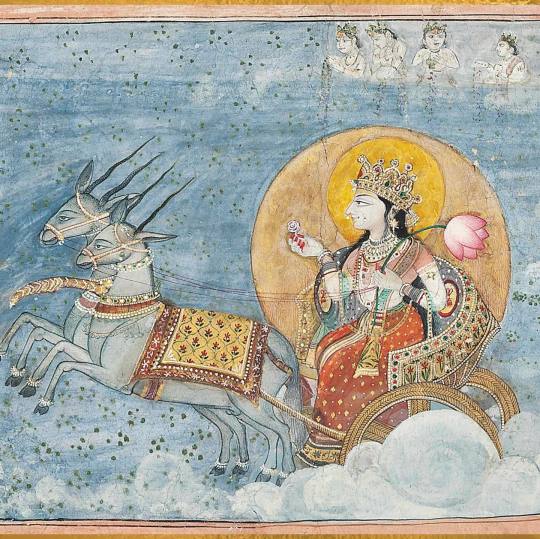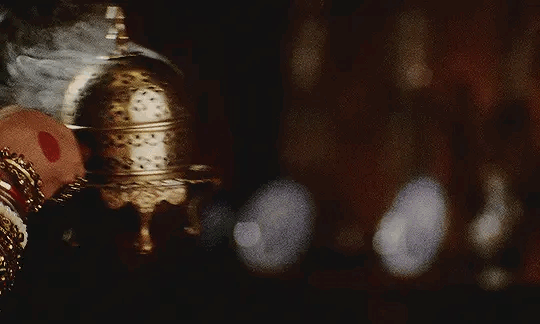#Goddess Chandi
Text

KEDARASISH DEY PAINTING
#india#kedarasish#kad#indian#kolkata#purah#hooghly#arambagh#kedarasishdey#painting#art#chandi#goddess chandi#India goddess#purah chandi Temple#maa chandi#chandi mandap#surromance#space#revive#refill#nature#landscape#landscape art#green#greenary
2 notes
·
View notes
Text
Chandi Mandir A Spiritual Oasis near Chandigarh | #travel #shortsvideo
Chandi Mandir, also known as Chandi Devi Temple, is a popular religious site near Chandigarh, located in the Panchkula district of Haryana, India. It's not situated directly within the city of Chandigarh but is in close proximity. Here is a brief description of Chandi Mandir: Chandi Mandir: Location: Chandi Mandir is located in the Shivalik foothills, around 15 kilometers from Chandigarh, near the Mansa Devi Temple complex. Deity: The temple is dedicated to Goddess Chandi, a form of Goddess Durga, and is considered a significant pilgrimage site for devotees seeking the blessings of the goddess. Architecture: The temple showcases traditional Hindu architectural style and has a vibrant and colorful appearance. The idol of Goddess Chandi is enshrined in the sanctum sanctorum. Surroundings: The temple is situated amidst picturesque surroundings, offering panoramic views of the surrounding hills and greenery. Devotees: Devotees visit Chandi Mandir throughout the year, and the temple sees a significant influx of pilgrims, especially during the Navratri festival. Festivals: Navratri is celebrated with great enthusiasm at Chandi Mandir. The temple premises come alive with religious fervor and cultural activities during this auspicious time.
#Chandi Mandir#Chandi Devi Temple#Panchkula#ChandigarhTemples#Haryana Tourism#Hindu Temples#Religious Sites#Pilgrimage#Goddess Chandi#Navratri Celebration
0 notes
Photo

The Moon Goddess Chandi, Pahari School, 1810-1820
143 notes
·
View notes
Text

devi: the goddess within
i have often heard people refer to women as devi insisting on their divinity. but often the implications are about Sati or Sita; the ones who perform sacrifices as their earthly duties. but what if she’s not?
what if she’s a mere human with many many faults and flaws that she works on diligently? what if instead of being single dimensional, she’s kaleidoscopic? what if she’s wrathful like Chandi but also demure like Gauri? what if she’s the source of life like Aditi but also dwells in cremation grounds like Kali? what if she’s wise like Saraswati but also possesses immense beauty like Laxmi?
if you really think about it, perhaps her dharma is only to figure out her life and honor her own light. perhaps, the reason she exists is for herself but she chooses to welcome others and love them. perhaps, she is the embodiment of all the devis; but on her own terms, just how she wants to be.
#desi tumblr#desiblr#desi tag#desi aesthetic#poetry#poets corner#indian dark academia#desi culture#desi poetry#desi stuff#divine feminine#goddess#hinduism#hindublr#hindu mythology#indian poetry#indian painting#indian women#desi women#women#desi dark academia#indian writers#light acadamia aesthetic#desi light academia#indian light academia#dark academic aesthetic#love#desi moodboard#desidarkacademia
250 notes
·
View notes
Text
I love reading how upper class Brahmins adapted the culture of so called dalit communities during the middle ages. I love how they bramhinized the culture of the people whom they discarded from their society to save their religion during the Islamic Invasion. The lower class communities created their own gods to fulfill their needs as they were not allowed to worship the gods of the upper class. They created god like Manasa(the godess of snakes), Chandi(a localised version of Durga), Dharma ,Annoda or Annapurna. Even the Radha whom the desiblr adores and worships was primarily a local goddess a local myth, she was not a part of the veda purana tradition of upper class Hindus. The only reason they decided to adopt these local, small deities is because the bramhins felt threatened by the rise of Islam in India . Therefore they decided to include these gods in their upper class stories by creating new tales so they could appeal to the common mass.
237 notes
·
View notes
Text

The outstretched tongue of Maa Kali distinguishes her from all other gods and goddesses of the Hindu pantheon. There are many goddesses who, like Kali, are naked and associated with blood and death, including Chandi, Chamunda, Bhairavi and Bhagavati, but none stick out their tongue like Maa Kali. Sometimes Kali does not have the characteristic outstretched tongue. She has fangs protruding from the corners of the mouth. This is especially popular in south Indian imagery. A Kali without the tongue is called Bhadra-Kali or the decent-Kali who does not reject feminine grace totally. She resides in household shrines and serves as the guardian of the family.
In Devi Mahatmya, Kali unfurls her tongue in her role as the ultimate deliverer called upon to salvage a situation that seems hopelessly out of control. She is summoned by Maa Durga herself to destroy the demon Rakta-bija, whose name means ‘blood-seed’. The demon Rakta-bija had the magical ability to produce a double of himself instantly every time a drop of his blood fell to the ground.
Having wounded Rakta-bija with a variety of weapons, Durga and her assistants, a fierce band of warriors known as the Matrikas, find they have worsened the situation: as Rakta-bija bleeds more profusely from his wounds, the battlefield gets filled with Rakta-bija duplicates. Desperate, Durga summons Kali, who spreads her tongue across the battlefield, and swallows in one gulp, the swarm of blood-born demons and sucks the blood from the original Rakta-bija until he falls lifeless. Kali’s tongue here is a weapon, to be feared, a reminder that nature ultimately consumes all life.
After killing the demon Daruka, Kali drank his blood. The blood drove her mad with bloodlust. She went around the world killing at random. The gods begged Shiva to stop her. So he took the form of a handsome man and lay in Kali’s path. As soon as Kali stepped on him, she bit her tongue out of embarrassment. She was ashamed to learn that her bloodlust had prevented her from seeing and recognising her own husband, Shiva! 💀👅💀
Jai Maa Kali ~ Jai Shiva Shankar
Tongue of Maa Kali
Talon Abraxas
73 notes
·
View notes
Text


Stunning 1974 Victorian in Pittsburgh, Pennsylvania would also make the classiest Gothic Vampire, Goddess, or Goth Girl/Guy lair. It has 4bds, 4.5ba, and is listed for $2.7M.

The central hall entrance.


There's a very nice sitting room with a beautiful ceiling. Can you picture how you would decorate this room?

Check out the amazing gilded gold in the library.

The dining room is nice. It has a fireplace and sconces. I would expect them to leave the chandie.

Nice kitchen. The cabinetry looks high end.

Beautiful room with the original fireplace, but it's too modernized. Now it doesn't look like we're in a Victorian anymore.

Look at the original closet in the upstairs hall.

This is way too modern.

They did the baths modern, too. Note the mural on the walls.

I like the way the night tables are attached, but I would not put modern rustic furniture in an historic Victorian.

This room is a better design. More authentic looking, yet modern.

They have a nice rec room that opens to the garden, but it looks so new.

Stone patio and paths separated by hedges and lawn.

The pool is pretty far from the house, and you have to go down stairs.

Mansard roof with cute awnings.

And, the perfect gothic gate.
184 notes
·
View notes
Text

Chinnamasta ॐ
Tantric goddesses and a ferocious aspect of Devi, the Hindu Divine Mother.
Goddess Chinnamasta - “She Whose Head is Cut Off”
Chinnamasta, a Hindu Goddess and the sixth cosmic wisdom in Dus Mahavidya, is visually fierce but spiritually evolved, tender and compassionate sixteen year old who cuts her own head to feed the ones who come to her by granting them protection and fulfilment.
Spiritually, “She whose head is cut off” represents the unlimited capacity of transcending the mind and be absorbed in the Supreme Void of the Absolute Divine Consciousness. Further, it also implies transcending the mind by separating from identity or ego.
Though visually ferocious, like Kali, her divine and electrifying personality reveals the uniqueness of the infinite divine consciousness, that is nameless, formless and limitless, holding a pure vision that goes beyond any veil of ignorance resulting in thundering spiritual transformation. Hence, Chinnamasta is called Prachanda Chandika, identifying herself with the most terrible form of Kali, which is Chandi.
Due to her association with the ascending energy through Sushumna Nadi, Chinnamasta is also correlated with the subtle energy causing the ascension of Kundalini Shakti and the deep transformation of the human being. There are in fact three streams of blood coming out from Chinnamasta’s throat: a central stream that she herself drinks, and two other placed on the left and on the right sides of this central stream, signifying the energies from ida nadi and pingala nadi, drunk by the two yoginis Dakini and Varini.
In the Pranamayakosha or the energy body, there are 72,000 nadis, pathways
Of energy or prana in the system. The 72,000 nadis spring from three basic nadis – the left, the right and the central – the Ida, Pingala, and Sushumna.
Ida, the feminine representing the moon, is the left channel. It originates in Muladhara, Ida ends up in the left nostril.
Pingala, the masculine representing the sun, is the right channel. It originates in Muladhara, Pingala ends up in the right nostril.
Sushumna is the central channel through which Kundalini moves upwards running up the body from just below Muladhara chakra to Sahasrara chakra at the crown of the head, thus energising the seven chakras.
The ability to balance Ida and Pingala, and cause Prana to flow in Sushumna results in an inner balance where whatever happens outside, there is a certain space within you which never gets disturbed and scale up the peaks of consciousness.

Shreem Hreeem Kleem Ain Vajra Vairochinayee Hum Hum Phat Swaha.
Recitation of this mantra can help practitioners to reach higher states of consciousness, illuminate higher wisdom and call forth the blessings of Lakshmi. It can be chanted for success in business, wealth, marriage and health, and is said to bring harmony and happiness to its practitioners.
7 notes
·
View notes
Text
Ketu: The ROOT of Femininity
”So I came back to the world yet once again as the priestess of the Great Goddess, bringing with me the memory of forgotten arts, one of which is the art of being a woman. I came because I was sent. There was that needed which I had to give. They did not send in a priestess of the Bright Isis, but of the Dark and Veiled One, because that was the need; and They said to me: ‘You will have tiger teeth, for you will be a Breaker in Pieces. Men will call you the Priestess of All Evil, but you know better.’” -Dion Fortune.
The purest expression of femininity in its most raw and terrifying sense is found in Mula Nakshatra (the lunar mansion from 0° - 13° 20’ Sagittarius), ruled by the Goddess, Nritti. The spiritual power (Shakti) of this nakshatra is to destroy and uproot. Anything that is rooted firmly in the truth cannot be destroyed, as truth is immortal and unchanging (which is why #Ketu reveals the Universal, objective truth, just as #Rahu [as Maya] conceals the truth & creates illusions of relativity & subjectivity). ... In the Devi Mahatmaya, a demon arises who the Gods cannot defeat, as he acquired his power from Shiva (The Great Giver— the Ultimate Masculine), and asked that no man could ever conquer him. The Gods then combine their energies and produce the Goddess Chandi & through seduction he meets his defeat at the hands of a beautiful woman. The underlying message of the story alludes to the mystery that it is the Goddess alone who is capable of destroying the impure ego and granting victory. The ultimate destruction comes from the feminine force, seemingly gentle & weak externally but with the natural ability to cause a kind of “implosion”, where one destroys *themselves* (ultimate destruction) through failure to respond correctly to the sexual feminine force. (That which submits, rules; the lowest valley ["the spirit of the valley... the mysterious feminine" according to the Tao Te Ching] conquers all; which is also how Ketu's stillness & unchanging truth conquers with passivity, alluding to why he holds the flag of a conquerer. This is also why a Shakti bija of Ketu is Strim, which is the Stri, or woman, bija).
It is through her destructive power alone that all the evil, error, and impurity in the world are truly exposed and then removed. Without the “fierce” side of the Goddess working naturally through all women, the world would become full of waste. In this way, we should understand that to suppress this heated & transformative female sexuality and the power of the #Goddess in any way is the gateway to impurity (despite dualistic minds who project & blame their own chaotic and uncontrolled response to the female body on the woman herself) and, through letting female sexuality flood the world, it is purified absolutely and transformed into a paradise where the strongest prevail.
~ Claire Nakti🌹
17 notes
·
View notes
Text
#Chandi Mandir#Chandigarh#Hindu Temple#Goddess Chandi#Religious Pilgrimage#Spiritual Retreat#Shivalik Hills#Divine Blessings#Panoramic Views#Navratri Festival#Sacred Destination#Devotional Experience#Hindu Culture#Serene Ambiance#Nature Retreat#Spiritual Journey#Tourist Attraction#Himalayan Foothills#Cultural Heritage#Sacred Energy
0 notes
Text
Chandi Path Transform Your Life with This Ancient Science
Do you want to transform your life with an ancient science of divine power and protection? Then you need to read this article on Chandi Path Benefits. You will learn how Chandi Path can help you achieve spiritual growth, mental peace and physical health.
Chandi Path is a sacred text that reveals the glory and power of the Goddess Durga, who is the supreme manifestation of the Mother Divine. But did you know that Chandi Path is also a science of cosmic energy that can transform your life in positive ways? In this article, we will explore the benefits and significance of Chandi Path, as well as how to perform it correctly and effectively. We will…

View On WordPress
#Benefits of Chandi Path in Bengali#Benefits of Chandi Path in Hindi#Benefits of Chandi Path pdf#Chandi Path#Chandi Path Benefits#Chandi Path in Bengali#Chandi Path in Gujarati#Chandi Path in Hindi#Chandi Path lyrics#Chandi Path mantra#Chandi Path meaning#Chandi Path pdf#Chandi Path pdf Gujarati#Devi Mahatmyam#Durga Saptashati#Goddess Durga#Rudra Chandi Path
1 note
·
View note
Text

।।श्री दुर्गा कवच स्तोत्र।।
॥ अथ देव्याः कवचम् ॥
॥ ॐ अस्य श्री चण्डीकवचस्य ॥
ब्रह्मा ऋषिः । अनुष्टुप् छन्दः ।
चामुण्डा देवता । अङ्गन्या सोक्तमातरो बीजम् ।
दिग्बन्ध देवतास्तत्त्वम् ।
॥ श्रीजगदम्बाप्रीत्यर्थे सप्तशती पाठाङ्गत्वेन जपे विनियोगः ॥
॥ ॐ नमश्चण्डिकायै ॥
Meaning(in English):
This is Sri Durga Kavach sloka compilation. Also called as Sri Chandi Kavach, this is believed to be recited and chanted blessedly by Sri Brahma, who himself is a Rishi.
Sri Chamudi is the presiding Deity and Goddess for this compilation. The attributes of Sri Chamudi are considered as the basic seed and dwelled upon. The main principle of this compilation is the shutting out of evil forces.
This is in praise of and to please Sri Jagadamba, the mother of the Universe. This is recited / applied prior to chanting of recitation of the lesson named Saptha Shatee in prayer to Sri Durga. Our humble salutations to Sri Chandika Devi.
१/५६
जय माँ दुर्गा
जय शिव शक्ति
#hindu dharma#hinduism#india#spirituality#navaratri#shakti#durga#durga puja#mahishasurmardini#maa durga#sadhna#hindu#bhakti#hindu mythology#hindustan#sanatan#sanatandharma#महिषबली प्रियाये#balipriyaye#रणप्रिया#रणमत्ता#धर्मार्थकाममोक्षे प्रदायिनी#dharma#ब्रह्मेश्विष्णु पूजिताये#पराशक्ति#आदिशक्ति#महाशक्ति
5 notes
·
View notes
Text
Strength. Mystic Spiral Tarot


Themes and Keywords:
Passion. Virility. Divine ecstasy. Kundalini. Feminine power. Courageous action. Control and mastery of animal nature. Joy of exercising strength. The beauty and the beast. Apocalyptic goddesses. Sacred prostitution. Pure maiden versus holy whore. Taming versus riding the lion. Moral fortitude.
Astrology/Element
The sign of Leo the Lion is arguably the strongest in the zodiac because it is ruled by the sun. Leo is the fixed fire sign, combining the endurance of fixed signs with the element of fire to produce an eternal flame. It is brimming with life force and magnetism: the fire element with the strength of the lion. The glyph looks like a curling lion’s mane. It also resembles the main artery and chambers of the heart. In the body, Leo rules the heart and the spine.
Leo’s motto, “I will,” gives a clue as to the source of the strength. Leo is so strong and vital that it can share the strength with others, giving generously from a large heart. Noble and extravagant, brave or recklessly courageous, Leo shines. Like the sun, though, it is proud. Leo believes in itself as the center of the universe.
The alpha star of Leo, Regulus, means “little king,” and it’s also called Cor Leonis, “Heart of the Lion.” It is the Royal Watcher star of the North, with the power “to will.” Regulus gives gifts of glory, like all royal stars, if the inner enemy is vanquished. Regulus’s nemesis is revenge; it must avoid seeking it even when justified.
Euripides’s Medea is gruesome, but nonetheless Medea’s quote sounds very leonine: “Let no one think of me that I am humble or weak or passive; let them understand I am of a different kind: dangerous to my enemies, loyal to my friends. To such a life glory belongs.”
Mythology/Alchemy
Crowley specifically connects this card to the alchemical process of distillation, “operated by internal ferment, and the influence of the sun and moon.” Whether speaking chemically or psychologically, distillation is heating, condensing, and purifying until all dissolves into spirit (distilled) or Spirit (godhood). The process applies heat or agitation with the eventual goal of sublimation. Wine becomes brandy, or impurities of the ego and id are purged. Distillation, like kundalini, raises the light (life force) from the alembic of the lower regions to the height of the third eye.
We can’t help but reflect on the alchemical image of the red lion in the card. The red lion of alchemy is the kundalini fire, the force behind semen in sexual alchemy. It is the sheer power of the life force, channeled. Distilled, it transmutes in the proper receptacle.
In myth and legend, goddesses of the lion abound: Chandi, Durga, Ishtar, Astarte, Inanna, Sekmet, Cybele, Babalon. Just chanting their names increases vigor. At the heart of all the stories is a core of strength and a connection to the act of the hieros gamos, the original marriage of the moon illuminated by the sun and united to it; the sacred marriage rather than the formal one of the Lovers. Perhaps the text in the library of Nag Hammadi, The Thunder, Perfect Mind, resonates best with the themes of divine feminine strength. It’s a treatise rich with meaning for students of both the Qabalah (the Tree of Life) and alchemy (the Tree of Knowledge). It’s the divine speech of a goddess of contradictions and power, much as the goddesses of love were also those of war.
Susan T. Chang
6 notes
·
View notes
Text

Eyes of Kali ॐ
Talon Abraxas
Under the third eye of Kali, the signs of both sun, moon, and fire are visible which represent the driving forces of nature. Kali is not always thought of as a Dark Goddess. Despite Kali's origins in battle, She evolved to a full-fledged symbol of Mother Nature in Her creative, nurturing and devouring aspects.
Durga Ma & Shakti's Third Eye
DURGA is the three eyed Ambika or Parvathi who takes the form of Ma Kali. Mother Durga is a Shakti manifestation representing the infinite power of the universe and symbol of feminine dynamism and potency of Siva.
The manifestation of Durga is said to emerge from Her formless essence and she is inseparable from the Source. She is worshiped for her gracious as well as terrifying aspects. Durga’s story appears primarily in the Skanda Purana which is part of the Markandeya Purana. Durga is said to have projected Kali out of her third eye.
When Goddess Durga is depicted having three eyes, she is referred to as Triyambake. These are similar to that of Lord Siva and symbolise knowledge that consumes ignorance. Symbolically Her left eye represent desire – the moon; the right action – the sun and the third eye represents knowledge or Fire.
Devi Mahatmyam, Sri Durga Saptasati – Chandi. Opening Sloka: 7:
Sarva Mangala Mangalye, Shive Sarvartha Sadhike, Sharanye Tryambake Gauri Narayani Namostute, Narayani Namostute, Narayani Namostute:
Meaning:
Oh Gauri Maa! Consort of Lord Shiva, You who bestows auspiciousness in all, And fulfill everyone's wishes, I prostrate myself before Thee, I salute you or take me under your care.
In Puranic literature, Goddess Parvathi is worshipped as Shakti. She is described as having many forms, including Durga, Chandi, Kali and Uma. While Siva symbolizes the efficient cause of the creation, Shakti symbolizes the material cause. Jai Maa Durga
SHAKTI’S THIRD EYE
Coconuts are a favourite offering to Hindu Gods and Goddesses as it has three ‘eyes’ and symbolises the breaking of ego. Exposing the purity of white copra is just that. The third eye refers to one’s inner vision.
It is the gate of the inner realms of higher consciousness. Thus it metaphorically symbolises non-dualistic thinking. In Shiva Tattva it is the eye of higher perception. It is not physically present but everyone ‘has’ a third eye. Jnani’s and enlightened persons realise its presence.
According to the Puranas, the third eye symbolises wisdom and knowledge. Siva’s burning of Kama Deva by his third eye is symbolic of destroying desire and lust.
As ‘Tryambaka’ Lord Siva is the ‘the three eyes’ God. While this has vedic origins and mentioned in the Upanishads, the Mahabaratha states ‘ambaka’ denotes ‘the eye’ of Ambika meaning mother’s eye.
Goddesses Parvathi, Saraswathi and Lakshmi, the consorts of Brahma, Vishnu and Siva are also collectively called Ambika. In the Baratha story, there is the saguna character of Ambika being the daughter of the King of Kashi. Her swamvara is interrupted by Bhisma who takes Ambika and her sisters Amba and Ambaliks.
Om Shakti
34 notes
·
View notes
Text

Makara (Sanskrit: मकर, romanized: Makara) is a legendary sea-creature in Hindu mythology. In Hindu astrology, Makara is equivalent to the Zodiac sign Capricorn.
Makara appears as the vahana (vehicle) of the river goddess Ganga, Narmada, and of the god of the ocean, Varuna. Makara are considered guardians of gateways and thresholds, protecting throne rooms as well as entryways to temples; it is the most commonly recurring creature in Hindu and Buddhist temple iconography, and also frequently appears as a gargoyle or as a spout attached to a natural spring. Makara-shaped earrings called Makarakundalas are sometimes worn by Hindu deities, for example Shiva, Vishnu, Surya, and Chandi. Makara is also the insignia of the love god Kamadeva, who has no dedicated temples and is also known as Makaradhvaja, "one whose flag depicts a makara".
Makara is a Sanskrit word which means "sea-animal, crocodile".
It is generally depicted as half terrestrial animal in the frontal part (stag, deer, or elephant) and half aquatic animal in the hind part (usually of a fish, a seal, or a snake, though sometimes a peacock or even a floral tail is depicted). Though Makara may take many different forms throughout Hindu culture, in the modern world, its form is always related to the marsh crocodile or water monitor.
#Myth#classical mythology#mythology#mythos#hindu mythology#makara#mythical creatures#legendary creature
3 notes
·
View notes
Photo

♥️♥️🌿♥️♥️🌿♥️♥️ BEAUTIFUL AUSPICIOUS MANASA DEVI MAA 🙏🏽🙏🏽❤️from @_.mohit_official._ • All Manasa Devi devotees should know this..... . *Body Color👉🏻 The color of Manasa Devi body is white like the moon, its proof is in Manasa Devi mantra.(Shweta Champaka Varnabhaam). *Eyes Color👉🏻 Mata Mansa's two eyes are of green color and the left eye is blind, the proof of this is that Mata Mansa was born in Vish Sagar, her two eyes are of green colour, and the left eye was blinded by Goddess Chandi by hitting a lotus . . *शरीर का रंग👉🏻 मनसा देवी के शरीर का रंग चंद्रमा के समान सफेद है, इसका प्रमाण मनसा देवी मंत्र में है। (श्वेत चंपक वर्णभम). *आंखों के रंग👉🏻 माता मनसा के 2 नैन हरा रंग के हैं और बया आंख अंध है इसका प्रमाण यह है कि माता मनसा विष सागर में जन्मी है उनके 2 नैन हरा रंग के हैं, और बया आंख को देवी चंडी ने कमल मार के अंध कर दिया था. . . *শরীরের রঙ👉🏻 মনসা দেবীর গায়ের রং চাঁদের মত সাদা, তার প্রমাণ আছে মনসা দেবী মন্ত্রে।(শ্বেতা চম্পাকা বর্ণভম). *চোখের রঙ👉🏻 মাতা মনসার দুটি চোখ সবুজ বর্ণের এবং বাম চোখটি অন্ধ, এর প্রমাণ হল মাতা মনসার জন্ম বিষ সাগরে, তার দুটি চোখ সবুজ বর্ণের এবং বাম চোখটি পদ্ম আঘাত করে দেবী চণ্ডী অন্ধ হয়েছিলেন। . #mansadevi #mago #bishohari #manasamangal #likeformore #followformore #bengali #odisha #delhi #westbengal #rajesthan https://www.instagram.com/p/CqCeNqgurXu/?igshid=NGJjMDIxMWI=
#mansadevi#mago#bishohari#manasamangal#likeformore#followformore#bengali#odisha#delhi#westbengal#rajesthan
7 notes
·
View notes